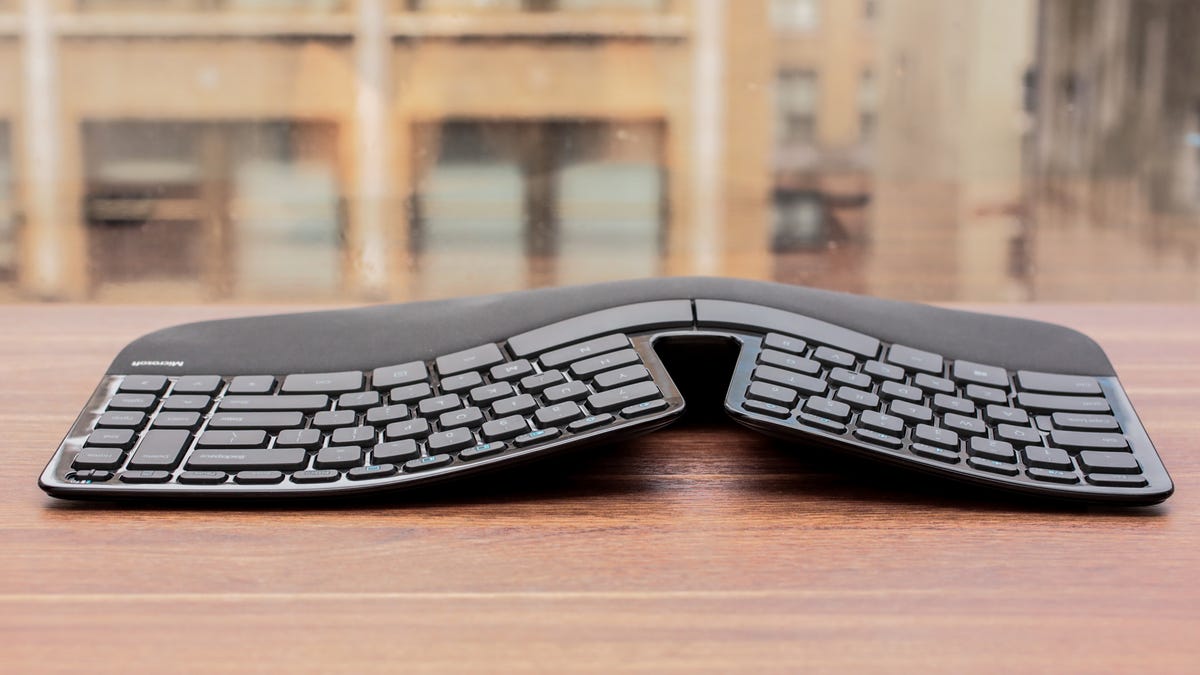Microsoft makes Bluetooth blunder with Sculpt keyboard
The new wireless, ergonomic keyboard looks good to CNET's Stephen Shankland -- except the part where Microsoft squanders a USB port instead of just using Bluetooth.

I've been waiting for years for Microsoft to come up with a worthy sequel to what once was my favorite keyboard, the company's swoopy ergonomic model. So I was excited about the arrival of Microsoft Sculpt keyboard.
Alas, it didn't take long for Microsoft to burst my bubble: it's got a wireless connection, but it doesn't use Bluetooth. Instead, the keyboard uses a tiny USB dongle that handles the wireless communications, which I feel is a technology choice that stopped being good a few years ago.
I still hold out hope that the keyboard will be worth my while. I've been using the older Microsoft keyboards continuously since the 1990s, am typing on one now, and have bought three or four over the years. I'm displeased with the current ones because I dislike the touch of the keys -- a weird combination of resistant yet spongy. So I'm eager to try the Sculpt.
But why, in this day and age, did Microsoft forsake Bluetooth for its ergo keyboard reboot?
Today, I don't want to plug up a laptop's precious USB port, and I want to be able to use my keyboard with my iPad, Nexus 7, or some future mobile device.
When I asked why it went with a proprietary wireless technology, Microsoft told me it found that Bluetooth imposed an unacceptable lags when Bluetooth devices wake back up after idle periods:
Sculpt Ergonomic Keyboard uses a 2.4 GHz USB connection, which is better suited for desktop computing where a person may periodically step away from their computer. The 2.4 GHz USB connection instantly reconnects as soon as you touch the mouse.
Bluetooth is particularly great for mobile scenarios since it offers wireless, dongle-free connection. However, it will go into sleep mode to conserve battery life if it's not used for several minutes. When the user begins typing or mousing again, they will experience a brief lag before the Bluetooth reconnects...
The "lag" we talk about is very small -- about a second or less... It's noticeable if you are in a hurry to jump online, and the USB connectivity alleviates that small delay.
That all sounds very reasonable, but here's the deal. I've been using a Bluetooth keyboard and mouse with a MacBook for more than three years now, and I have no trouble. When I wake my Mac up, it takes -- and I'm estimating here -- a quarter second between when I tap the keyboard and when I can start typing my password to log back in.
Honestly, I never really noticed it, perhaps because I've been trained to expect a little pause while a napping computer wakes up. And I'm a pretty impatient person when it comes to keyboard and mouse response.
You know what else? After Microsoft told me about its reasons for shunning Bluetooth, I did some other tests with the Mac. The wakeup lag time is exactly the same with the laptop's built-in keyboard. So somehow Apple has managed to get a Bluetooth keyboard working just fine.
It's not perfect. Maybe once every two or three weeks, my keyboard, mouse, or trackpad loses its Bluetooth connection while I'm actually using the computer, and it usually takes a tap and a couple seconds to re-initiate the reconnection. And when I go away for a couple weeks, the peripherals go into a deeper sleep state that makes them even drowsier.
For the right keyboard touch, I'll be willing to sacrifice a USB port, so Microsoft's choice isn't a showstopper. I just wish I didn't have to. With Microsoft's Surface tablet and impending Nokia acquisition making it more of a hardware company, perhaps it'll figure out how Apple got this to work.

